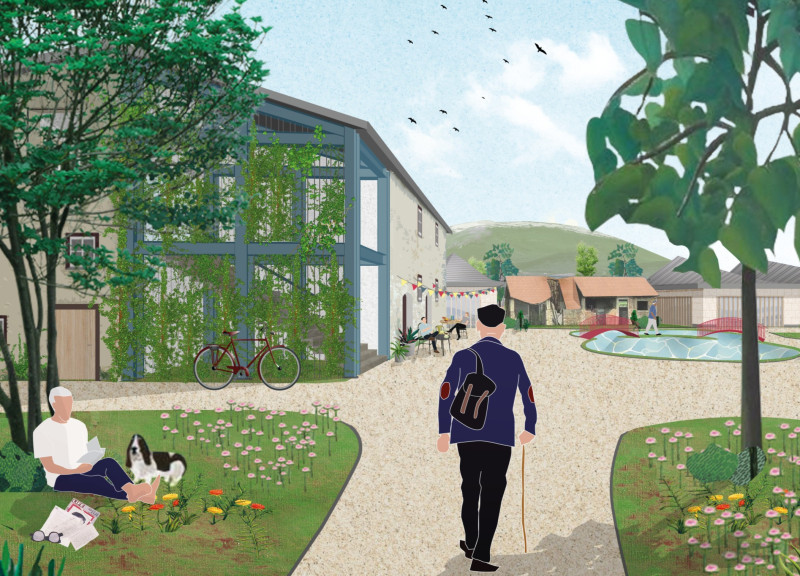5 key facts about this project
The design for Tili Vino’s guest houses in Umbria, Italy, combines private living spaces with communal areas. Located amidst beautiful vineyards, the project enhances the experience for visitors. It features four new guest homes and transforms an existing structure into an additional guest accommodation and gathering space for activities such as wine tasting.
Site Integration
A prominent aspect of the design is the inclusion of existing ruins on the site. These historic elements are preserved and incorporated into the project, allowing for future growth while respecting their aesthetic value. This thoughtful approach creates a connection between new and old architecture, enhancing the relationship between the buildings and their natural surroundings.
Functional Layout
The main house features two separate sections. One half serves as a bar area designed to encourage social interaction among guests, while the other half contains insulated guest flats and shared amenities, including a communal kitchen and restrooms. This layout promotes a sense of community, allowing guests to enjoy both social and private experiences within the same space.
Sustainability Features
Sustainability plays a key role in the design. Features such as a biodiversity pond and water treatment systems have been included to support local ecosystems. There are also provisions for covered parking and electric vehicle charging stations. These elements underscore a commitment to environmentally friendly practices throughout the entire project.
Materiality and Aesthetics
Materials are carefully selected to reflect local characteristics and ecological values. Locally sourced wood is used for structural components, while cork cladding provides both thermal insulation and visual appeal. Photovoltaic panels contribute to energy generation, supporting the commitment to sustainability. These choices root the project in its geographical setting, enhancing both its appearance and functionality.
The design incorporates private balconies for the guest homes, providing sweeping views of the surrounding mountains. Roof overhangs offer necessary shade while enhancing comfort for visitors, allowing them to enjoy the landscape in all seasons.























































